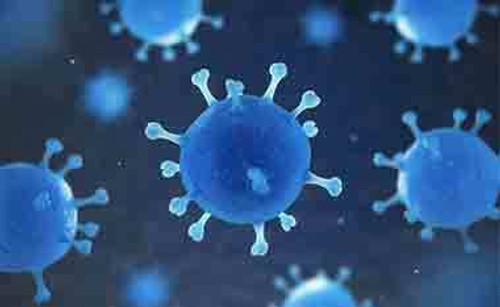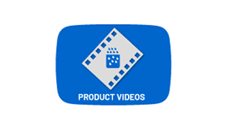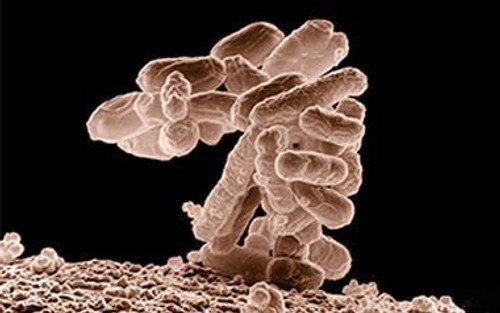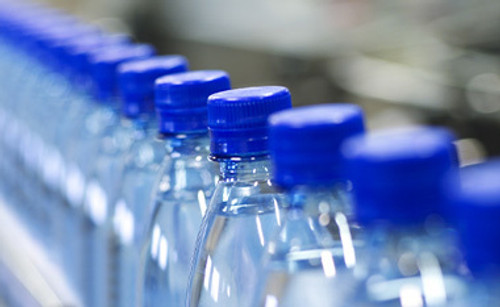How To Remove Bacteria From Water Using Chemicals
One of the most commonly used methods of destroying bacteria is the application of chemicals. Among the chemicals, chlorine remains the most widely used and is in some cases recommended by government agencies. Granted, chlorination remains quite effective in killing bacteria in water.
However, many health experts have warned against its use in drinking water. Such concerns are anchored on scientific shreds of evidence articulated in reports by reputable institutions. For example, a 2017 report by the U.S. Council of Environmental Quality stated that people who consume chlorinated water face a 93% higher risk of developing cancer than those who drink water without the chemical.
Why does chlorination have this effect? Chlorine is a known powerful oxidant, which when introduced into water, kills the bacteria therein. That is a good thing. The problem, however, comes in when this chlorinated water is consumed. Its oxidation effect also works to kill useful bacteria in the stomach yet these form an essential part of our immune system, understanding that 70% of the human immune system works in the gut. Experts assert that the elimination of these useful bacteria works to predispose the person to health problems such as colorectal cancer, bowel irritation, type 2 diabetes, obesity, bloating, diarrhea and gas. Pure Aqua understands this quite too well and that is why they strive to always avoid the use of chemicals in their water purification systems.
Even though chlorination is quite effective in killing bacteria and other pathogens, the results are not 100 percent. Research has proved that the generally recommended quantity of chlorine used in water treatment never kills Cryptosporidium and Giardia parasites, which are also health risks. Moreover, chlorine knocks out manganese, hydrogen sulfide, and iron, resulting in an unfriendly taste.
Sodium chloride, citric acid, and potassium chloride are some of the chemicals that are also used in water treatment. However, these chemicals are not that widely used, more so in places where technologically advanced water treatment options have taken root.
Reasonable Life of Residual Protection
The fact that water has been treated does not mean it cannot be re-contaminated. Often times when we disinfect water, we either pump it to a reservoir or channel it straight to pipes for use. For the time that the water is in the reservoir, it may end up being contaminated again, which would result in double work if it were to be treated again. Ensuring thorough cleaning of the reservoir or pipes is an essential addition to a method whose disinfection or purification ability leaves the water safe for longer. Another approach often recommended by Pure Aqua based on their many years of experience is running the water from the tank through UV sterilizer when pumping it out for use. Either way, Pure Aqua engineers can give you tips on which method would work for you based on your unique needs.
A Breakdown Of Pure Aqua’s Ultramodern Bacteria Removal Systems
We have mentioned the use of chlorine among other chemicals as effective ways of removing bacteria from water, save for their health setbacks. Technological advancements in the water treatment sector have made the entire process both simple and effective.
The three main technologies that Pure Aqua’s systems employ in removing bacteria from water are UV sterilization, nanofiltration and reverse osmosis. The interesting thing about these three technologies is that they can all be used together.
HOW TO REMOVE BACTERIA FROM WATER USING UV STERILIZATION
Where the water is already clean and does not need further purification, Pure Aqua recommends the use of UV sterilizers. The reason why this is important at the tail end of the process is that it does not remove particles or any organisms in the water. Instead, it only works to kill them. UV sterilizers have been floated by experts as the most effective when it comes to destroying bacteria in water treatment. The use of UV sterilizers is cost-effective, fast, safe, chemical free, fool-proof and quite easy to use. The Pure Aqua UV sterilizers are low-pressure types known for their efficiency in the generation of the most optimal germicidal rays for the sterilization.
How To Remove Bacteria From Water Using Reverse Osmosis
One of the leading water purification technologies is reverse osmosis. This is attributed to its desalination ability and effectiveness in the removal of all impurities in water. The technology is based on the use of high pressure and permeable membranes designed to only let water through as it blocks all other foreign substances. One of Pure Aqua’s water purification systems that utilize this technology is the Seawater Reverse Osmosis (SWRO), which is designed to remove all salts and minerals in the water. This process has a 99% positive result in the removal of dissolved salts from the water and is successful even in the purification of very high TDS water.
How To Remove Bacteria From Water Using Nanofiltration Technology
Unlike ultrafiltration that has a pore size of somewhere close to 0.01 microns, a nanofiltration filter has much smaller ones at 0.001 microns, making it an effective method of removing molecules, viruses, salts, and ions, known for making water hard. That is why nanofiltration is often used in cases where the water to be purified is hard. Nanofiltration is one of the technologies that Pure Aqua sells. According to their experts, this technology has gained acceptance across many industries because of its high percentage of positive results.
System Installation Support
Traditional ways of destroying bacteria in water like boiling and use of chemicals do not require expertise except the information about how long the boiling is to be done and the amount of chemical to be used respectively. However, when it comes to employing the latest bacteria removal technologies, some specialized skills are needed in the installation, testing, and maintenance of the systems.
This is an area that Pure Aqua takes very seriously.
With more than 9,000 water purification systems under their belt, 2,000 systems customized to customer specifications and a customer base spread across 200 countries, Pure Aqua knows too well the importance of customer support in the business. It is, therefore, not surprising that their engineers are always available to provide guidance.
[custom-specifications]
Water is an essential commodity that, luckily, nature has generously supplied to humankind. An amazing 71% of the Earth's surface is covered by water. Ironically, it still remains scarce in many places across the globe because of the lack of the much-needed infrastructure to ensure its adequate distribution. Also worrying is the rampant lack of clean and safe water for human consumption.
Why is it so?
In many places where there is sufficient water, the elephant in the room is often the presence of pathogens, chemicals, and sediments that render the water unsafe. That is why there are many cases of cholera, dysentery, and typhoid among other waterborne diseases being reported across the world.
Whether you are going to get a small water purification machine for your home or a much bigger one for commercial or industrial use, clean and safe water is a must. Can you imagine that the entire earth has only 1% of safe drinkable water? That figure is appalling, to say the least. It is such unpalatable figures that have pushed Pure Aqua Inc., USA to invest in ground-breaking water purification technology and to expand its reach across the globe to make some positive impact in the provision of clean water and hopefully realize an uptick in the figures.
Public awareness campaigns have been conducted across the globe to sensitize populations about the need to ensure that the water they drink is 100 percent safe. As a result, water treatment activities have posted some upshot, with notable players now releasing technologically advanced water purification systems that deliver fool-proof results. Pure Aqua, for example, is known for manufacturing water treatment machines that utilize such technologies as Reverse Osmosis, Nanofiltration, Ultrafiltration, and UV Sterilization, among others. Alongside these are chemical dosing systems, filters, water softeners, deionizers, and more. For excellent results, the company employs some of these processes either exclusively or jointly. For example, Pure Aqua often recommends UV sterilization as a post-filtration procedure.
[/custom-specifications]
[custom-features]
Recommended Systems would be our:
- Industrial UV Sterilizer UVI Series
- Commercial UV Sterilizer UVC Series
- Chemical Dosing Systems CDS Series
[/custom-features]
[custom-usage]
Things Pure Aqua’s Systems Offer In Bacterial Removal From Water
When choosing a water treatment method, some basic standards are necessary. Pure Aqua strives to always meet these benchmarks in a bid to remain among the leading providers of the most efficient, cost-effective and easy to use systems that would meet the unique needs of both corporate bodies and individuals.
Here are three key considerations to make:
- Total Removal Of Bacteria And Other Pathogens
If you are going to choose a method for removing bacteria from water, be sure to pick one whose results are absolute. You would not want to use a system whose results are incomplete as that would still leave the water unsafe for drinking. If you are not sure about which method would give you the recommended results, feel free to talk to Pure Aqua engineers. They are always helpful in providing guidance to those interested in how to remove bacteria from water.
- Consistency And Thus Reliability In Bacteria Removal From Water
In addition to being able to remove all bacteria from water, Pure Aqua’s systems replicate top results in waters from different sources. This consistency helps in ensuring that no pathogens maneuver their way through the water treatment process and eventually into the human body in case the user chooses an alternative water source.
- Water To Be Safe For Consumption After Removal Of Bacteria
Pure Aqua's water treatment systems produce safe water out of the box. Of what value would it be if, say, you use a method that kills all the bacteria, but leaves you with water that is not good for drinking? Reverse osmosis, nanofiltration, and UV sterilization are known water purification and treatment processes that help remove bacteria from water without adding foreign substances to it thus leaving it completely safe.
[/custom-usage]
[custom-documents]
[/custom-documents]
-
Terrific information
I understand how plants remove bacteria from water now
- Related Project1:
- https://pureaqua.com/ultraviolet-industrial-sterilizer-4x-800-gpm-aruba/
- Related Project2:
- https://pureaqua.com/industrial-uv-water-purifier-130-gpm-canada/
- Related Project3:
- https://pureaqua.com/5-twro-machines-4500-gpd-sri-lanka/
- Related Project4:
- https://pureaqua.com/skid-mounted-seawater-reverse-osmosis-system-380-gpd-mexico/
 ENGLISH arrow_drop_down
ENGLISH arrow_drop_down
 ESPAÑOL
ESPAÑOL ???????
??????? PORTUGUÉS
PORTUGUÉS FRANÇAIS
FRANÇAIS














